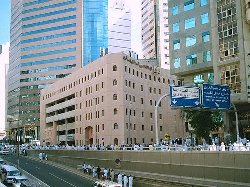Modern medicine and the road to Makkah
A Divine calling
Every pilgrim, and not a few for a lifetime, dreams of a perfect Hajj—one that Allah accepts as righteous, that washes away all sin, that delivers one from that spiritual womb of the world in Makkah as pure as the moment one emerged from mother.
But mundane as it may be, good physical condition and health practices are realities that help make such dreams come true. For if one hopes to scale the lofty spiritual heights of Hajj pleasing Allah by visiting this first House of His in the company of millions of others—proper bodily preparation unquestionably goes a long way to help.
That is the purpose of this (to some, perhaps, too worldly) piece: To help the pilgrim better fulfill his or her vision of this fifth of Islam’s famed Five Pillars, but once-in-a-lifetime obligation-in-odyssey. Bear with me as I take you round the physical paces of Hajj’s miracle traces. This will entail five cornerstones of our own: Physical factors, topographical tests, activity anxieties, medical maladies, and precautions and preventions. But first, here’s a bit of psycho-spiritual history, so we don’t lose focus.
The Creator Commands, the human heeds
Hajj, in many ways, is a commemoration of the exemplary divine heedfulness of the believing family of Prophet Ibraheem, may Allah exalt his mention. From the 8th to the 12th of the sacred month Thul-Hijjah, which is the twelfth and last lunation of Islam’s calendar year, we travel to the Ka`bah in memory of his hallowed journey there with his wife Hajar, and eldest son, and father of the Arabs, Ismaa’il, may Allah exalt his mention.
We go round the house this prophet-father and -son, built up together. We traverse the two mounts of Safa and Marwah in the very footsteps of our mother Hajar, walking where she walked and running where she ran. We stone the symbolic pillars where Ismaa’eel pelted Satan, who sought to stir him to disobedience against Allah and Ibraheem.
Yet above all, we ritually sacrifice a lawful gift-animal, to feed the world’s poor and ourselves, for the sake of Allah, in celebration of His deliverance of Isma’il, may Allah exalt his mention, from ritual death in the great test of faith faced and passed by Ibraheem, may Allah exalt his mention, Friend of God.
Hajj thus becomes an individual obligation upon every adult Muslim who has the means to make it there. It is noteworthy that good physical and mental health forms part of that obliging condition. For Allah knew that Hajj would entail health hardships and physical rigors that its pilgrims had to be prepared to meet.
So on to preparation.
The three Hajj challenges to physical wellbeing
To maximize the benefit of Hajj, the would-be pilgrim should account for four physical factors: Physical ability, mental strength, the environment, and medical conditions, existing and potential.
All valid worship involves two components: Intention and action, in that order. Sincere purpose is the precondition Allah has set for His acceptance of any of our acts of devotion. Physical adequacy is an essential part of actualizing that intention and performing it optimally.
In some ways, Hajj is unique among the obligatory rituals of worship. It challenges our physical competency in a succession of rites that place increasing demands upon our bodies and pose increasing "logistical" corporal difficulties.
In spite of our sincere intention, we may be unable to complete its rites (at least on our own), if we suffer one or another physically inadequacy. It is, therefore, crucial—prior to embarking on Hajj and while on pilgrimage—that we honestly inventory our physical condition, that we pay it due attention, and that we maintain it, remediate it, or manage it in the best possible way. This is the single most significant step we can take in securing our own ability to satisfy its integrals and cope with its stresses and pressures as we move through its arduous stations and complete its profoundly fulfilling rituals.
To understand the changes that take place in the internal balance and stability of our bodies when we expose them to problematical environments, we need to know how they respond to surrounding conditions and how they adjust to a new environment. This is vital to the effective management of potential medical problems. The factors that affect this internal equilibrium when it comes to Hajj can be broken down into three general kinds, each subcategories specific to the pilgrimage experience:
A. Factors that affect immunity and resistance, and increase chance of infection
1. Increasing fatigue from a long journey
2. Sleep deprivation
3. Tension and insecurity regarding the unknown
4. Calorie deprivation due to schedule change or lack of nutritional availability
B. Environmental conditions that predispose us to acquiring new conditions and making existing conditions worse
1. Local temperature variance from one area to another: Excessive heat can lead to heat-stroke or —exhaustion. Cold may bring on flu, upper respiratory infection (URI), pneumonia, and the like.
2. Air and ground contamination, and overwhelming of sanitary system: Air pollution causes respiratory ailments like URI, aggravation of asthma, and so forth. Sanitation problems bring about diarrheal diseases, hepatitis A, and so on.
3. Overcrowded accommodation facilities and random use of open space for accommodation increases exposure to atmospheric pollution and poor sanitation.
B. Human factors
1. Lack of education about sanitation and physical health: Coughing, sneezing, spitting, improperly reliving oneself and poor hand washing spreads infection.
2. Lack of compassion for others: coughing and sneezing in a crowded place, hand shaking without proper washing increases contagion.
3. Lack of sense of discipline: Overcrowding at gates and elevators, and the like, creates hazards for oneself and others.
4. Over enthusiasm for worship and disregard for rules: Particularly in attempting to kiss the Black Stone and in throwing pebbles at the Jamarat risks serious physical injuries.
Topography and top health
Makkah is nestled amid a complex ring of old worn mountains on the west coast of the Arabian Peninsula some 50 miles from the Red sea and 45 miles east and southeast of Jeddah. It is about 909 ft above sea level. Mina and Muzdalifah, two other Hajj stations, exist also amid such sloping chains. 'Arafah, where everyone gathers for the central feature of Hajj, is a plateau plain, except for Mount 'Arafah (Jabal Al-Rahmah), which is basically a hill. Because of this low mountain-surrounded landscape, in high traffic seasons the air quality can quickly deteriorate and stay as such till Hajj season is over.
Makkah covers a 10-square-mile area. Its 1.5 million inhabitants live on Hajj and 'Umrah tourism that generates about $100 million a year.
Mina, Muzdalifah and 'Arafah are east and southeast of Makkah. The shortest walking distance between Al-Masjidul Al-Haraam where the Ka`bah is to Mina is about 5 miles (8 km). 'Arafah is about twice that distance from Makkah, with Mina and Muzdalifah in between.
The desert region’s weather is dry year-round with low humidity. Temperature, however, varies widely, flaming in summer, usually up to 120 F, and a cool 60 F average in winter. But the highs and lows can spike both dramatically higher and lower, drop to freezing in winter, particularly in the valley of Muzdalifah when a cold front blows from the north.
Madeenah on the other hand has a relatively cooler temperature. It sprawls across 66 square miles with 1.3 million residents. It is about 280 miles (447 km) north of Makkah. Visiting Madeenah is Sunnah and not a rite of Hajj, but most pilgrims make the trip for the sake of visiting our beloved Prophet Muhammad  and praying in the Haram (Al-Masjid-un-Nabawi) next to his grave.
and praying in the Haram (Al-Masjid-un-Nabawi) next to his grave.
Intense temperatures subject to remarkable swings, elevation changes, distances to be traversed as 2 million non-residents converge with twice that many locals and regionals—particularly in the proximity of the Haramain—these are the geographical factors that form the health risk assessment—that individual pilgrims and medical professional must consider and prepare for.
This is, if you will, the topical context. But its proper medical evaluation requires us to first mix in the ritual content of Hajj. It is this we shall look at now.


 Home
Home Discover Islam
Discover Islam Quran Recitations
Quran Recitations Lectures
Lectures
 Fatwa
Fatwa Articles
Articles Fiqh
Fiqh E-Books
E-Books Boys & Girls
Boys & Girls  Hajj Rulings
Hajj Rulings Hajj Fatwas
Hajj Fatwas














